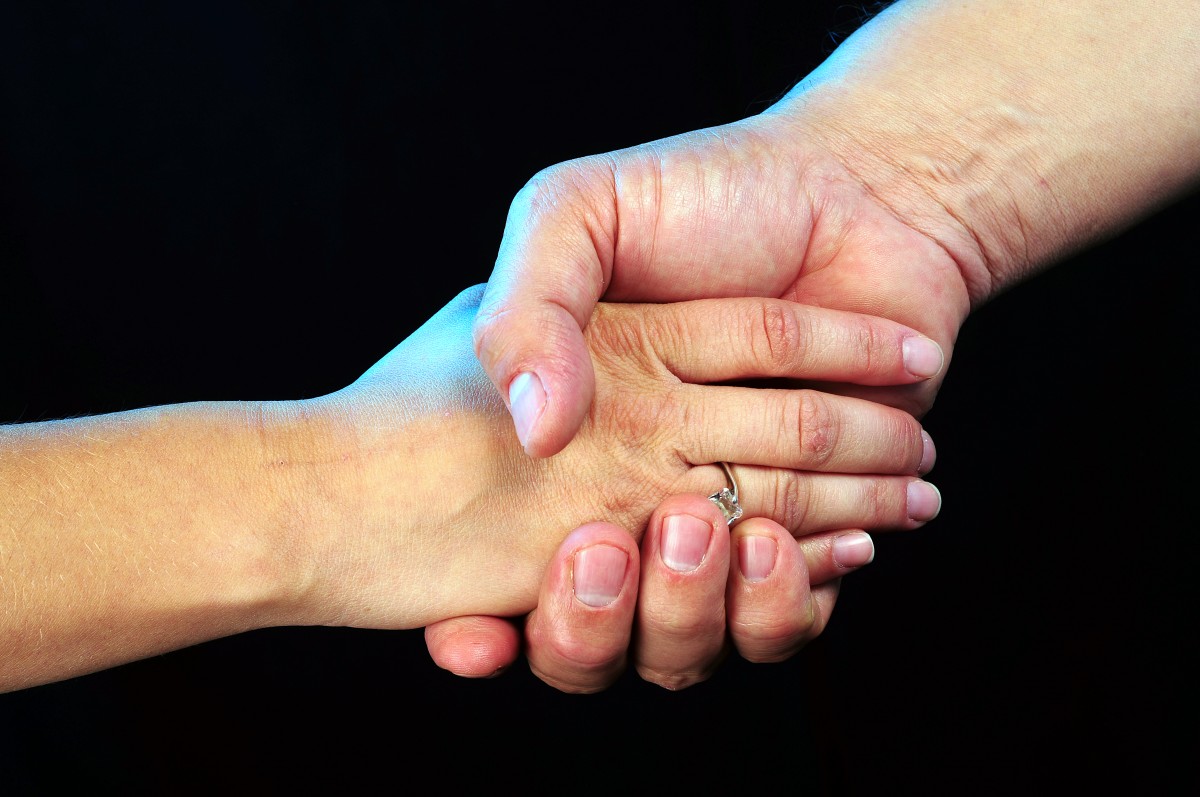
Between the holidays bringing people closer together and cold weather forcing them together, often in enclosed spaces, now is the time that illness-causing bacteria and viruses start jumping from host to host, having the time of their short, hedonistic lives.
One of the best ways of minimizing their rampage, and the chances of getting sick, is by keeping our hands clean. Thanks to our hygiene-obsessed culture, we have at our disposal a whole arsenal of anti-germ tactics, from fancy hand sanitizers to good old soap and water. But how do they stack up against each other? Microbiologist Michelle Sconce Massequoi has some opinions about it — and also about handwashing technique, which is often the weakest link in the illness prevention chain.
The first main strategy is to reduce the number of bad bacteria or viruses on our hands:
“Studies have shown that effectively washing with soap and water significantly reduces the bacterial load of diarrhea-causing bacteria.
The second strategy is to kill the bacteria. We do this by using products with an antibacterial agent such as alcohols, chlorine, peroxides, chlorhexidine or triclosan.
[…]However, there’s a problem. Some bacterial cells on our hands may have genes that enable them to be resistant to a given antibacterial agent. This means that after the antibacterial agent kills some bacteria, the resistant strains remaining on the hands can flourish.”
While there does appear to be some extra benefit to having anti-bacterial properties in the soap, regular soap and elbow grease goes a long way towards knocking out hand-based bacteria, as well as avoiding the development of more dastardly superbugs. Sudsing up all the surfaces of your hands (including wrists, if needed!) for between 15 and 30 seconds — “about the time to sing ‘Happy Birthday’ twice,” says Sconce Massequoi — is key. (A recent NIH study of a college town population’s hand hygiene habits returned the sobering average scrub length as six seconds. While the refined focus of the study didn’t include a look at subsequent illness rates, I think we can all agree that that comparative light rinse sounds gross.)
Dear reader, as you gather your family around you this winter, or press an elevator button, or muscle your way through a subway trip beside some dude who unrepentantly sneezes on you four times, I wish you all good luck in keeping colds and viruses at bay. It’s heartening to remember that we are not powerless against them — our best tools to stay healthy are literally in our hands!

We at DFC are about to take a strategic news holiday, having overdosed a little on politics updates from our southern neighbour. There’s a lot of atypical decision making going on down there — and most of these choices are united by the same underlying lack of empathy.
To risk a sweeping generalization, it seems to be easy for folks in power to leverage troublesome policies on people who are, well, not them. It’s likely you’ve even seen this change on a personal or business level, where a colleague or friend gets promoted, and gradually loses the ability to see things from the perspectives of others.
The Atlantic has a fascinating recent breakdown of behavioural and neurocognitive research into the phenomenon. It outlines how a study out of Berkeley coined the term “power paradox” to describe it. And how, most recently, a team from McMaster University has looked to brain imaging for answers: Scans showed that, in the brains of people who felt powerful, “mirroring” (the lighting up of sympathetic areas of the brain when we witness another person take an action) is physically impaired.
“Was the mirroring response broken? More like anesthetized. None of the participants possessed permanent power. They were college students who had been “primed” to feel potent by recounting an experience in which they had been in charge. The anestheticwould presumably wear off when the feeling did — their brains weren’t structurally damaged after an afternoon in the lab. But if the effect had been long-lasting — say, by dint of having Wall Street analysts whispering their greatness quarter after quarter, board members offering them extra helpings of pay, and Forbes praising them for “doing well while doing good” — they may have what in medicine is known as “functional” changes to the brain.”
All is not lost, though, with either colleagues or politicians — the effect of the power paradox can be reduced! The trick is, the affected individual has to cease actually feelingpowerful. This can happen consciously, if a CEO reminds themselves of how they felt a time when they weren’t in authority. And (I’m sure) it can also happen involuntarily, when, say, a voting population decides to remind a politician who works for whom…

As a Canadian from Michigan, I’ve always kept a soft spot in my heart for my childhood “big city”, Detroit, the former automotive crown jewel of the Midwest — that has been having a really rough go of it over the past several decades. The disappearance of major industry and cultural forces was terrifying at the beginning. But now, the city is in the midst of a well-established renaissance, with an extraordinary flourishing of grassroots communities — of artists, farmers, activists, and more! These groups seek improvement of everyday life in the Motor City, and do it by playing to their unique strengths and niches.
The Equitable Internet Initiative is one such group, which is striving to bring connectivity to ’Net deserts in Detroit. I was staggered to hear the stats that spurred this group: an enormous 40% percent of Detroit residents are completely without Internet access! While cost is a factor, the central problem is a lack of physical infrastructure — the city is still considered too economically depressed by many of the big companies to warrant expansion of their networks there. This means that almost half of the population can’t connect with information, opportunities, businesses, and communities, via the method that comes most naturally to us in our modern world.
So the Initiative went out into these under-connected areas, spread the news, and helped create community networks for citizens who need the Internet the most. In addition to establishing physical cables and fibre, the program also supports training in network installation, maintenance, and teaching of digital skills.
“‘We want to make sure that we’re not just installing all the equipment, but also educating the community,’ said Rita Ramirez, one of the stewards working on the project in Detroit’s Southwest neighborhood.
One component the groups are most eager to build out is the intranet that will result from connecting so many homes (about 50 in each neighborhood) to a shared wireless connection. They are encouraging local residents to take advantage of that intranet and build shared tools like a forum and emergency communication network that is completely localized and secure.”
As immersed in the computer industry as I am, I often advocate that more Internet is a good thing as a matter of course. But when I think about it in the Detroit context, the Internet transforms from a simply good thing into a necessity. I’m fascinated to see how the Equitable Internet Initiative will have fared when this main project completes next month. And I’m really looking forward to what widespread Internet access helps make happen for the citizens of Detroit!

As the calendar clicks over to December, the less prepared among us (Exhibit A: me) are just getting an inkling that maybe they should start shopping for the gift-giving portion of their winter festival of choice. Happily, you and I now have it covered! — Thanks to a hilarious artwork called “Fish Hammer,” originated by UK artist Neil Mendoza, as a cheeky commentary on human-fish relations.
As an Autodesk Artist in Residence at San Francisco’s Pier 9, Mendoza used the design and fabrication software to build an apparatus for a goldfish he named “Smashie.” Smashie lives in a cylindrical tank, and is tracked by a motion-detecting camera. The camera maps the direction of Smashie’s aimless swimming onto a hammer mounted on an aluminium track in front of the tank. The hammer pivots as Smashie moves, while a cam randomly drops the head of the hammer on a doll-house-sized human habitat arranged underneath it. (See video of the art in action here)
The artwork represents a union of technology and nature but also exists as a tiny, Twilight-Zone-like alternate universe where fish are empowered to destroy human habitats the way that we do theirs. Mendoza’s body of work generally treads this fascinating line between funny and scary, or the familiar and uncanny — like his “Electric Knife Orchestra” or “Rock Band”.
Neatest of all, Mendoza has released the building instructions for “Fish Hammer” for public use! The process does require some specialized equipment, like Autodesk Inventor, and oh, whichever old waterjet cutter you’ve got kicking around, but it’s still within the realm of possibility. So, my gift list is done: Laminated Instructables, and Home Depot and Big Al’s Aquarium gift certificates for all. Have fun!